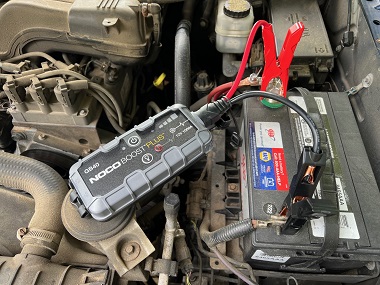Classic Car Maintenance
Your old car needs your help in order to perform it's best and hold it's value. Classic car maintenance starts with fun easy stuff like cleaning, but there's also oil changes, tune-ups, correct coolant and coolant level, and tire maintenance.
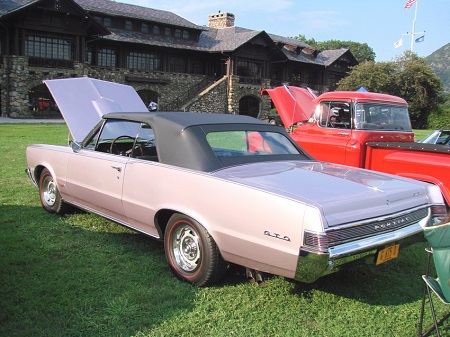
Engine Oil and Filter
Engine oil deteriorates over time and use. After a certain point, it loses certain lubricating qualities. This causes friction, which increases mechanical wear, and allows carbon deposits and sludge to build up.
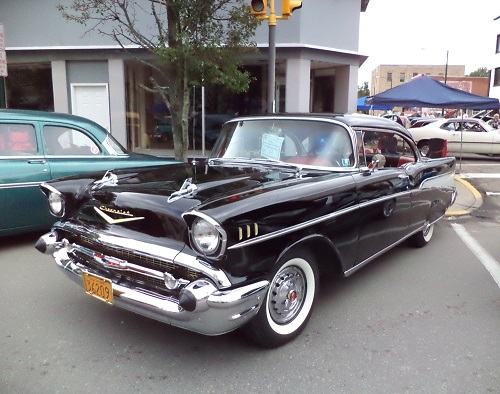
Most pre-mid 70's engines have a pushrod-operated valvetrain driven by a flat-tappet camshaft. In order to prevent premature cam and lifter wear, there must be an adequate amount of anti-wear additives.
This was not a problem 30 or 40 years ago, but for environmental reasons, the quantity of an additive called ZDDP has been reduced significantly in modern oils.
Read: Best Oil For Classic Cars
If you don't know when the engine oil was changed last, check the dipstick, and note the color of the oil. New oil is almost clear. Black oil needs to be changed.
Check Engine Oil Regularly - Older engines, having larger clearances, naturally burn oil. Also, check underneath your car every so often. Leaking/seeping gaskets and seals are common on classic cars.
Oil Filter Specs - Absolute vs Nominal
Absolute rating indicates the filter's ability to capture 99.9% of particles of a certain size or larger.
Nominal rating indicates a capture efficiency at a lower particle size, with 50% being a common example.
Absolute-rated is a more realistic way of measuring filtration efficiency.
Many popular brands are rated at nominal value, which is 50% of the 5 or 10 micron sized particles that it can catch. Companies such as Amsoil and Wix are Absolute rated, 30 microns at 99% flow.
Wix filters are still mostly made in the USA.
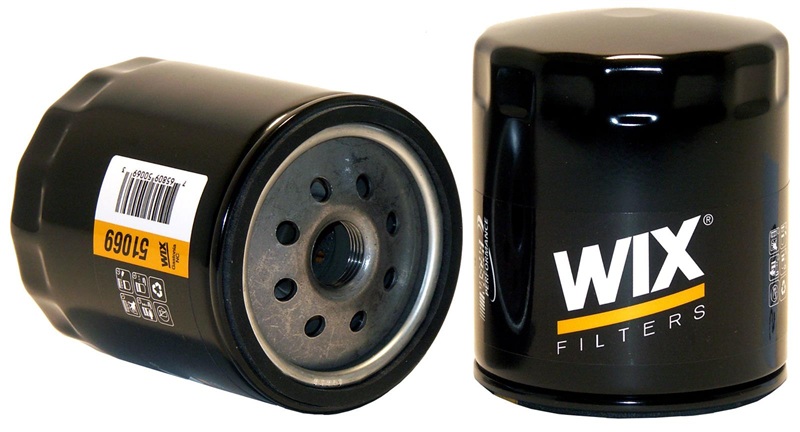
NOTE: Napa Gold filters are Wix filters re-branded.
********************
Engine Cooling
Heat is the enemy of internal combustion engines. Plain and simple, overheating causes engine failures.
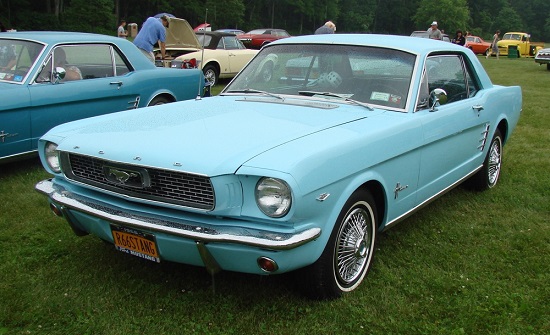
The function of a car's cooling system is to keep the engine temperature at a safe level. Excessive heat is removed through the radiator, via water pump and upper and lower radiator hoses.
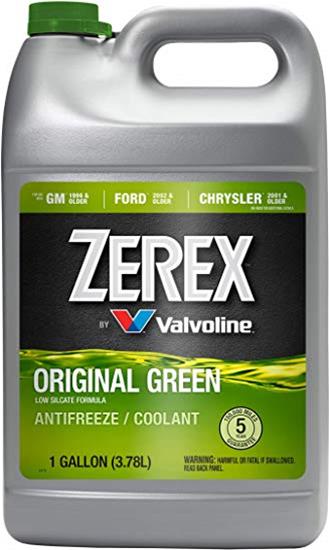
Zerex Original Green Antifreeze and Coolant
If your classic car is air-cooled, it may have an oil cooler to help keep temperatures down.
Check Engine Coolant
Any problem with a cooling system can cause your engine to overheat, which could result in engine damage. Lack of coolant is usually caused by a slow leak, and since leaks are common with old engines, it's important to check coolant level every few months and keep it full.
CAUTION: Never open your coolant system when the engine is hot. Engine coolant is under pressure!
NOTE: Coolant and anti-freeze are the same thing.
Under-Hood Rubber
Engine compartments get very hot, causing rubber hoses to get hard and brittle over time, which leads to breakage. If radiator hoses or heater hoses show any signs of cracking, replace them before they become a problem.
********************
Keep Your Engine In Tune
A "tune-up" refers to engine wear items, such as spark plugs, ignition wires, distributor cap and rotor. Air and gas filters are usually changed at this time as well.
********************
Battery Care
Check connections for tightness and corrosion. Also check fluid level if it's a non-sealed battery. Top off with water if necessary, and allow to stand for an hour before charging.
Constant-Current Battery Chargers
Constant-current chargers are often called smart-chargers, because they can vary the charging voltage to keep current constant.
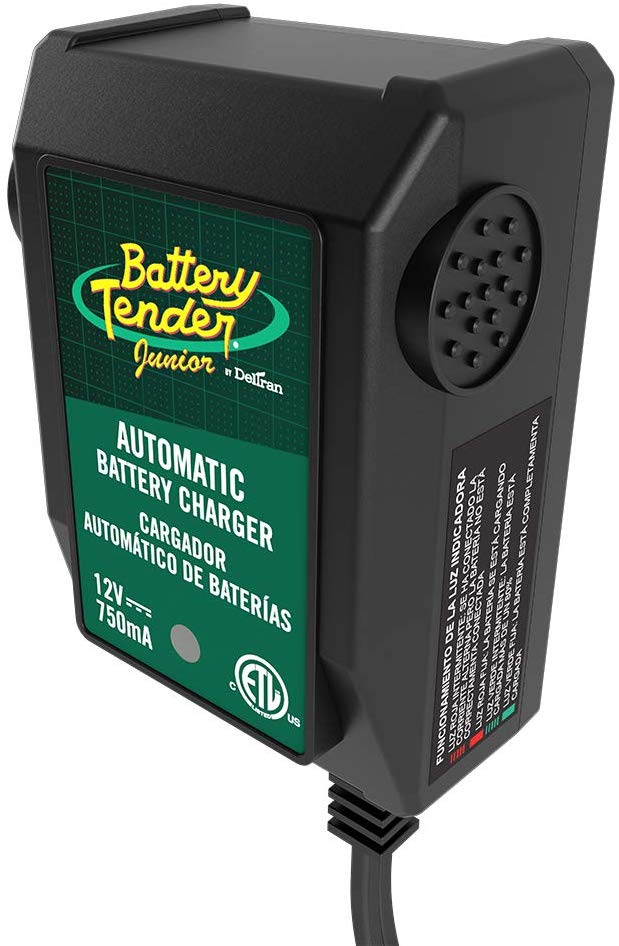
The phrase 'battery tender' is a brand name, and they are one of the more popular battery maintenance devices.
********************
Tire Maintenance
Tires on a car that sits may develop flat spots in as little as 30 days. After several months of sitting in the same place, those flat spots may or may not go away after driving.
Tires That Sit For A Long Time
For the those who drive their classic car just a few times a year, here's an easy way to keep your tires from flat-spotting. Every couple of weeks, without starting the engine, put the transmission in neutral and roll the car forward (or backward) a foot or two.
Doing this on a regular basis will not only keep your tires from flat-spotting, it will keep brake calipers from developing problems.
Tire Inflation
Tire inflation affects ride, handling, braking and fuel economy. Every car manufacturer designs the handling characteristics of their vehicles around the weight of the vehicle, so the load range, height and aspect ratio of the tires all factor into the performance and stability of the vehicle.
Tire pressure gauges can be either digital or analog. Neither is better than the other, it's just preference.
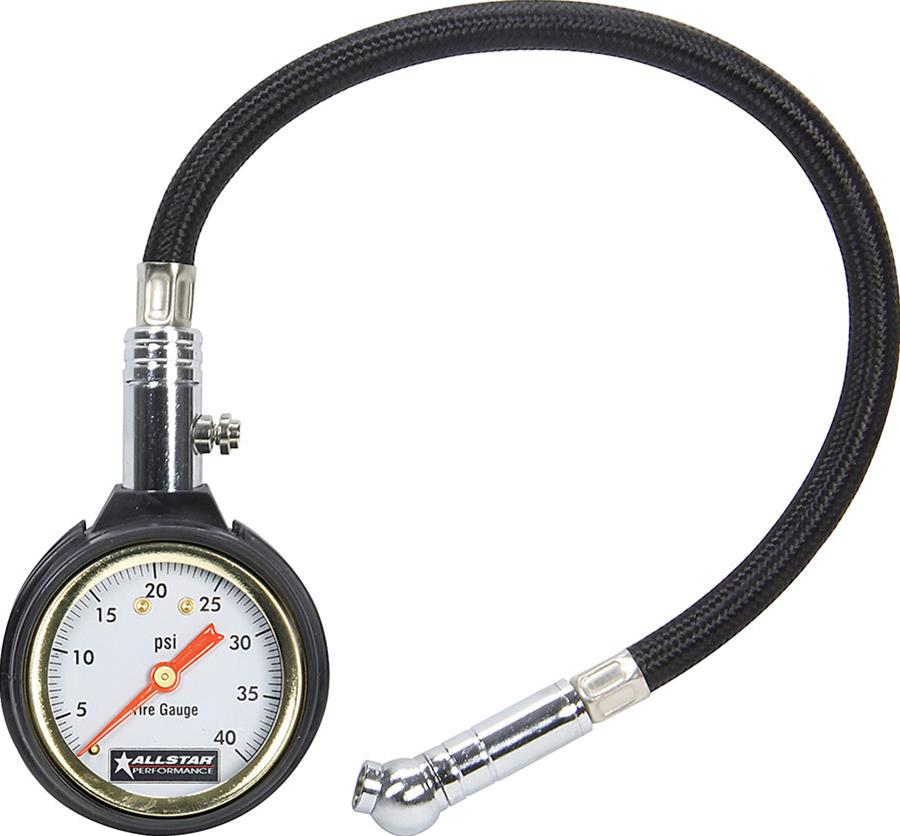
0-40 PSI Tire Gauge with 12" Hose
The maximum pressure stamped on the side of the tire is not what you inflate it to (that's what the tire is capable of safely handling). Check the owners manual or driver's door-jamb sticker for the correct air pressure you should inflate your classic car tires to.
Tires naturally lose a few pounds of air every month or so, particularly in summer months.
Air pressure should be checked when tires are cold. When tires are warm, readings are slightly higher. After a long trip in hot weather, accurate inflation readings may be taken after a minimum of three hours.
Exterior Cleaning
Washing the outside of your car removes bugs, bird droppings, dirt, dust, and sap, as well as restore it's luster. There are many good products out there.
Mothers California Gold is super-sudsy, pH balanced, and resists water spotting.
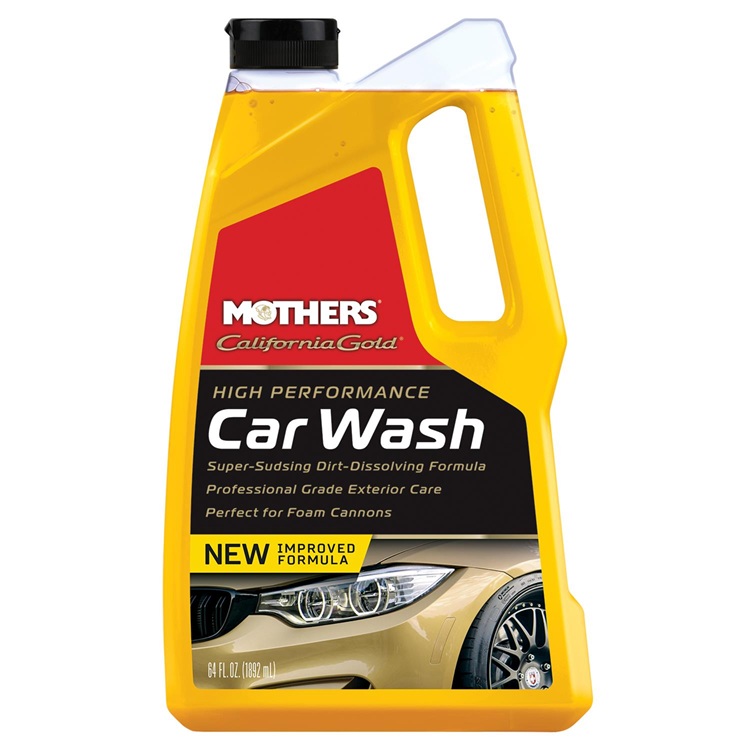
It's also made in the USA.
Should I Wax My Classic Car?
This depends on what type and how old the paint is. If it's less than 10 years old, it's likely urethane-based, which is tougher than lacquer or enamel and is very chip resistant. Because of this, polishing and waxing is not needed like in the 'old days'.
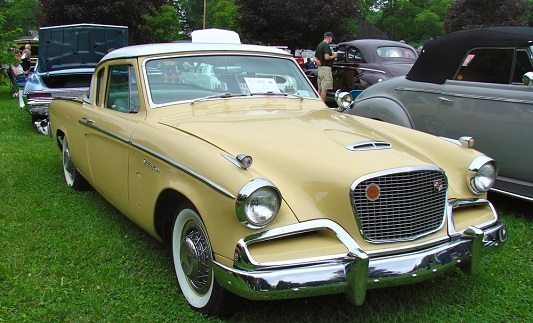
Got chrome?
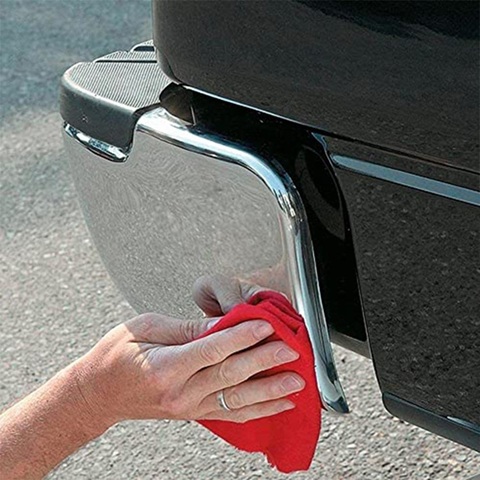
One of the best aluminum and chrome polishes on the market today is Autosol Metal Polish.
Interior Cleaning
The leather, vinyl, and plastic inside your car should also be cleaned and protected. Aerosols like Armor All are popular and work well.
Cleaning Tires and Wheels
Spraying shiny dressing compounds on your sidewalls is not recommended by tire manufacturers. Many tire and wheel cleaners contain harsh acids, alkalis and/or detergents that can damage wheels and paint.
Cleaning car tires should be done with a brush and soapy water. Use non-petroleum based products that are safe for tires (as well as environmentally friendly).
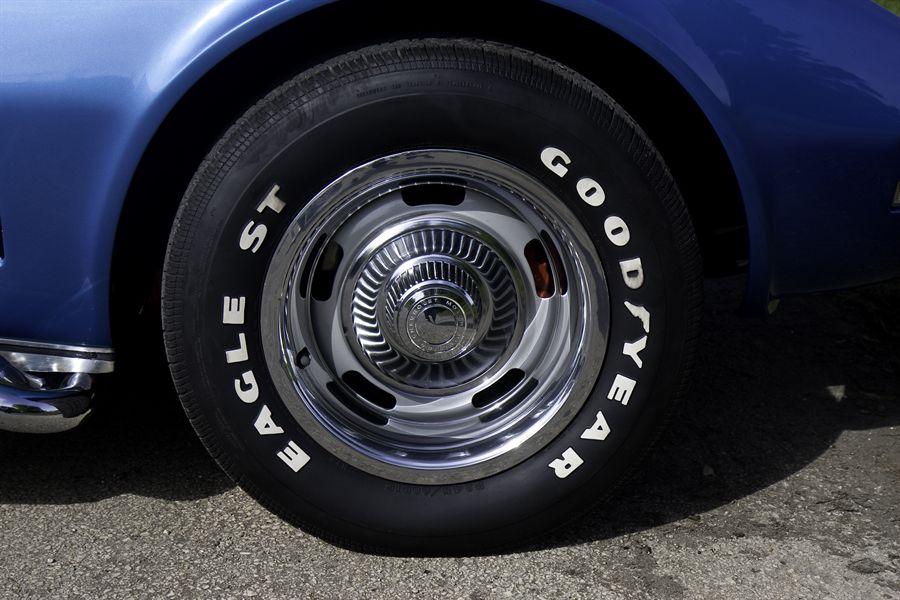
Read: Classic Car Tires Overview
********************
Do I Need To Rotate My Tires?
Tire rotation helps extend the life of your tires, and tire manufacturers recommend rotating every six to eight thousand miles. However, in a classic car's life, that could be three or four years!
TIP: On your daily driver, tires need to be rotated regularly (unless you enjoy buying tires sooner than you need to).
Storing Tires
If the tires are mounted on rims, it's Ok to stack them horizontally and cover them.
Loose tires should be stored upright and then covered.
If your tires have whitewall or raised-white letters, store them with the whitewalls or letters facing each other. Otherwise, black rubber could stain them.
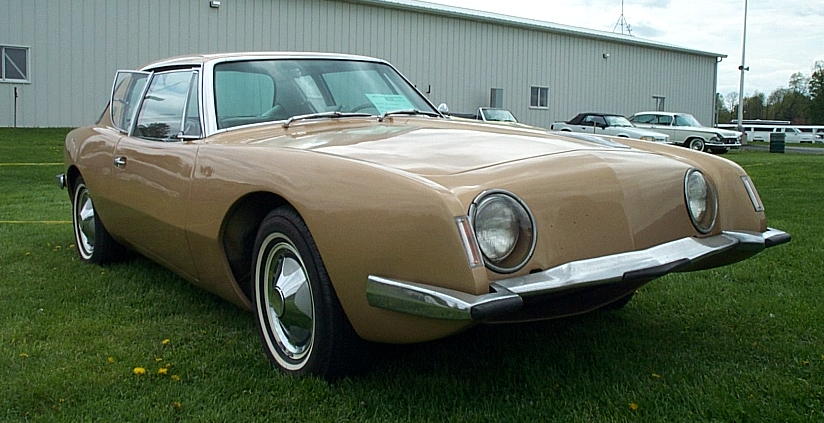
********************
Indoor Car Storage
If your classic car sits for months at a time, buy a quality indoor car cover and use it! Whether you store it at home or in a nearby facility, a fitted car cover will prevent dust and dirt from settling on your paint, as well as preventing accidental scratches.
********************
Outdoor Car Storage
Keeping your classic car outside subjects them to sun damage, bird droppings, tree sap, dirt and dust. Without a car cover, your paint can get damaged quickly.
Sometimes when I'm working on a project in the garage and need room, one of my cars will stay outside for a couple weeks. But it's always under an Outdoor Car Cover.
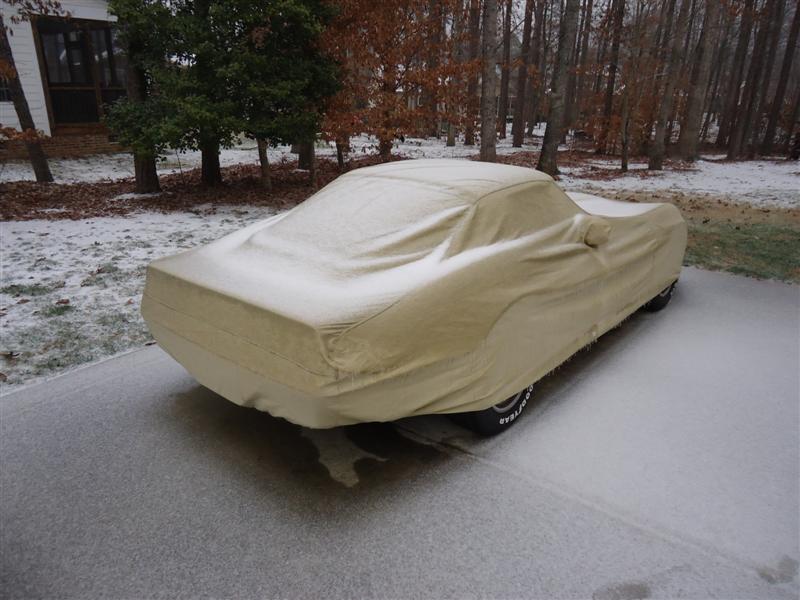
Long-Term Storage
When an old car is placed in long-term storage (over a year), it should be jacked up and blocked (either jack stands or cinder blocks will work here) so the weight of the vehicle is not sitting on the tires. Covering the tires from sunlight will also help.
********************
Maintenance of Wood-Bodied Cars
Old Woody wagons require considerable more maintenance than conventional steel-bodied vehicles. They should be washed more frequently, and protected against rain, road grime, and road salt.
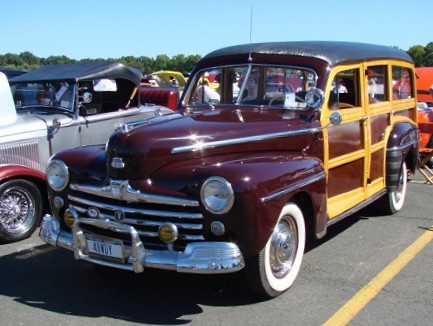
Additionally, weather-worn panels will need replacement, and nuts and bolts holding them onto the car's body need to be gone over periodically.
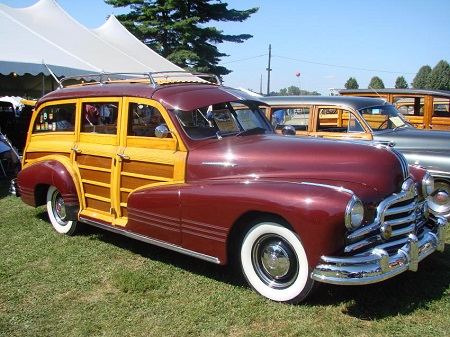
********************
Articles of Interest:
Best Oil for Classic Cars
Best Oil For Daily Drivers
